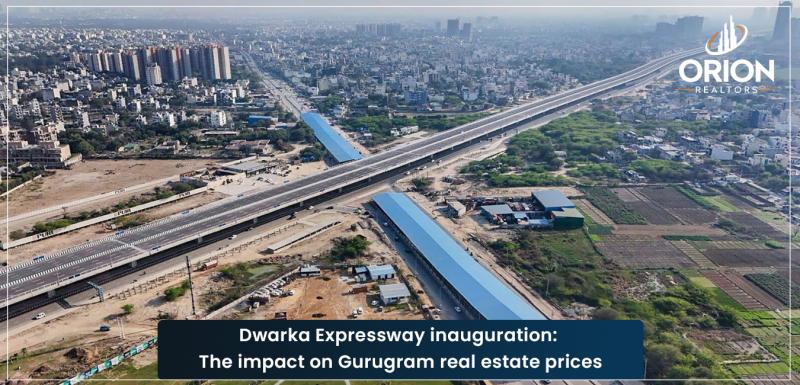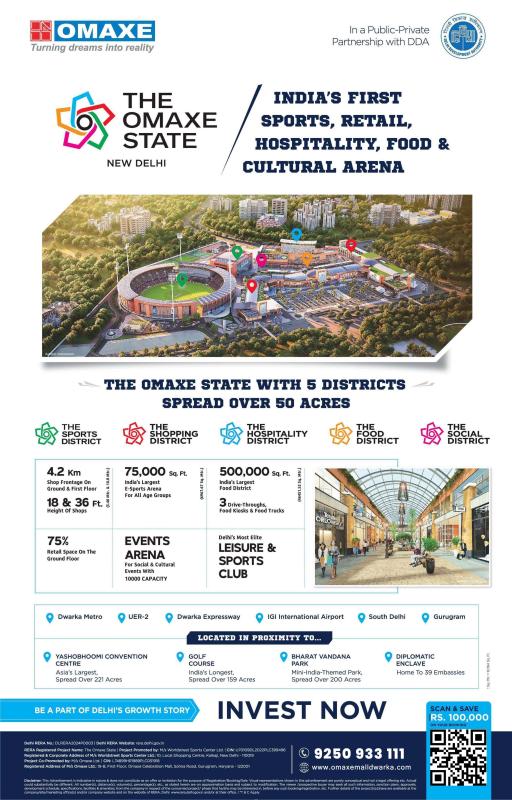Emerging Trends in Delhi Commercial Real Estate: A Look Ahead

The surge in investments in Delhi-NCR has been
primarily driven by the office segment, with major equity buy-outs by prominent
fund houses. Delhi, the bustling capital of India, stands at the juncture of
transformation regarding its commercial real estate. In this article, we have
highlighted the emerging trends in Delhi commercial real estate projects and
their probable impact on the future dynamics of the market. The commercial real
estate market is fast evolving in the city as it is constantly being influenced
by rapid advancements in technology, shifting economic dynamics, and constantly
changing business needs.
1. Emergence
of Flexible Workspaces
Trend Analysis: The COVID-19 pandemic accelerated
the adoption of remote and hybrid work models. In response, demand for flexible
workspaces has seen a significant increase in growth. Coworking spaces and
serviced offices are no longer niche but mainstream options for companies in
pursuit of agility and cost efficiency.
Impact
on Market Dynamics: Flexible
workspaces have started to reshape the demand for commercial properties. The
need to reconsider the use of conventional office spaces can reduce long-term
commitments. It is increasing adaptability and a focused approach toward tenant
needs, which further gives rise to dynamic real estate.
2. Technological
Integration and Smart Buildings
Trend
Analysis: In real
estate, especially in building construction, the integration of technology is
picking up remarkable speed. Features like IoT-enabled systems for energy
management, sophisticated security, and improved operational efficiency will
probably become standard.
Impact
on Market Dynamics: Smart
buildings promise not only a reduction in operational expenses but also an
enhanced experience for the tenants. With the growing trend of these
technologies, properties that incorporate them into their entities will
certainly net high rents and premiums from tenants. This could lead to a
possible market bifurcation whereby high-tech, well-managed properties begin to
see stronger demand than traditional buildings.
3. Sustainability
and Green Building Initiatives
Trend Analysis: Sustainability has indeed become an integral part of the requirement and no more an option. Most of the new commercial projects in Delhi are targeting either LEED or GRIHA certification. The focus is now on energy-efficient design, reduction of waste, and use of sustainable materials.
Impact
on Market Dynamics: Emphasis on sustainability might jack up the costs in
the initial phases, but it is bound to bring in long-term savings and increases
property value. Buildings that have strict environmental standards will surely
see the rush of tenants who have good corporate social responsibility goals. Other
factors that may continue to push up demand for green buildings include
regulatory incentives and growing consumer awareness of environmental concerns.
4. Revitalization
of Urban Spaces
Trend
Analysis:
Similarly, the commercial landscape of Delhi has witnessed the resurgence of
old city areas. Across the neglected zones, redevelopment projects turn them
into thriving business districts. Many such projects have mixed-use
developments combining office space with retail and residential components.
Market
Dynamics-Impact: Since it
is a process of urban renewal, this may lead to increased property prices and
attract business entities into some premium locations featuring good
infrastructure and connectivity. This trend also instills economic activities
in underdeveloped areas and thus helps in rendering a commercial real estate
market more balanced and diversified.
5. Health
and Well-being End
Trend
Analysis: The
post-pandemic era has heightened awareness of health and well-being in the
workplace. Commercial real estate projects are now incorporating features that
promote wellness, such as better air quality, natural lighting, and access to
green spaces.
Shifts
in Market Dynamics: Those
properties that had wellness factors as priorities may then be more attractive
to tenants and investors. This may be an influence on design standard shifts
with trends in tenant preference to provide health-centric features prominent
in commercial real estate development.
6. Growth
of E-Commerce and Warehousing
Trend
Analysis: The
exponential growth in the e-commerce business has brought up a surge in demand
for warehousing and logistics facilities. Delhi's commercial real estate market
is seeing increased investments in logistics hubs and distribution centres to
support the growth in online retailing.
Market
Implication: Greater
e-commerce would support demand for warehousing space and could force
rebalancing of commercial real estate portfolios. Investors and developers may
raise their interest in logistics real estate due to stable returns and high
occupancy rates.
Conclusion:
The commercial real estate sector of Delhi is fast
changing owing to changing work style and technology, sustainability, and
fluctuating economic conditions. It would be essential for the stakeholders to
adapt themselves to the new trend that the market has got reshaped for and with
flexible workspaces, smart buildings, green initiatives, urban revitalization,
wellness-focused designs, and warehousing space caused by rising e-commerce.
Innovation, adaptability, and sustainability are going to mark the future of
Delhi's commercial real estate and define new peripheries for the sector.
This landscape, with
evolving trends, is full of challenges and opportunities, and being tuned into
the trend will be very important for the investors, developers, and businesses
operating in commercial real estate Delhi





Comments